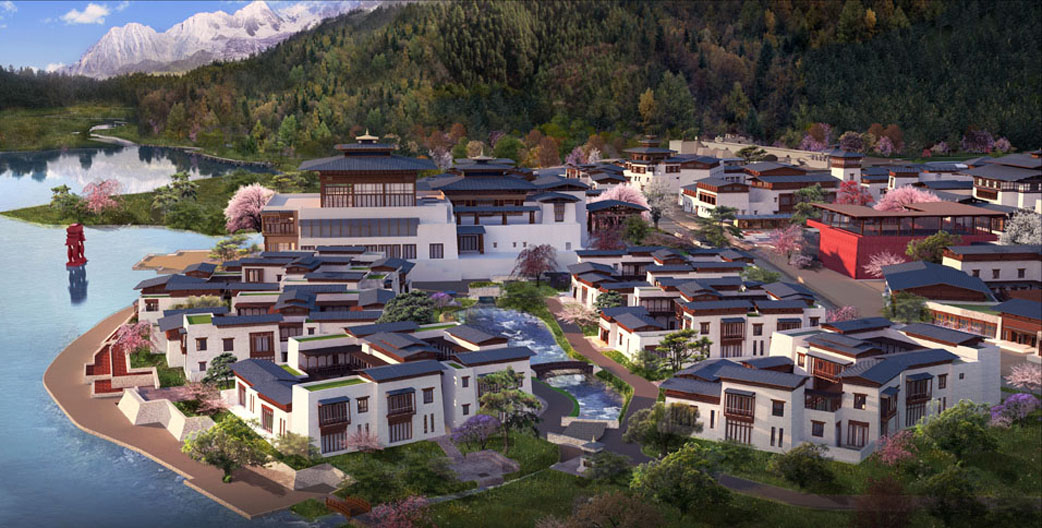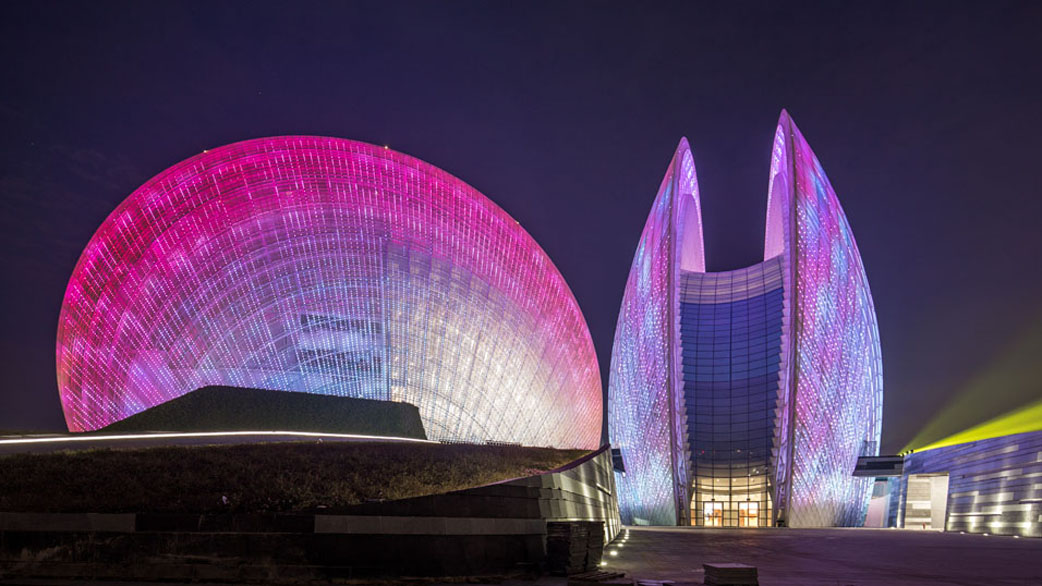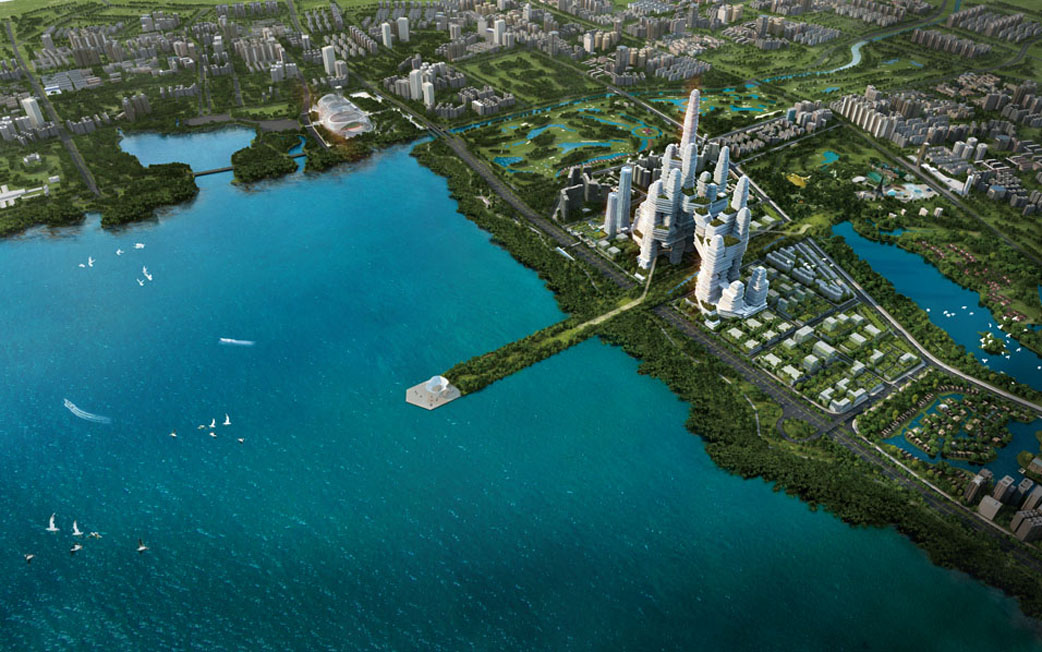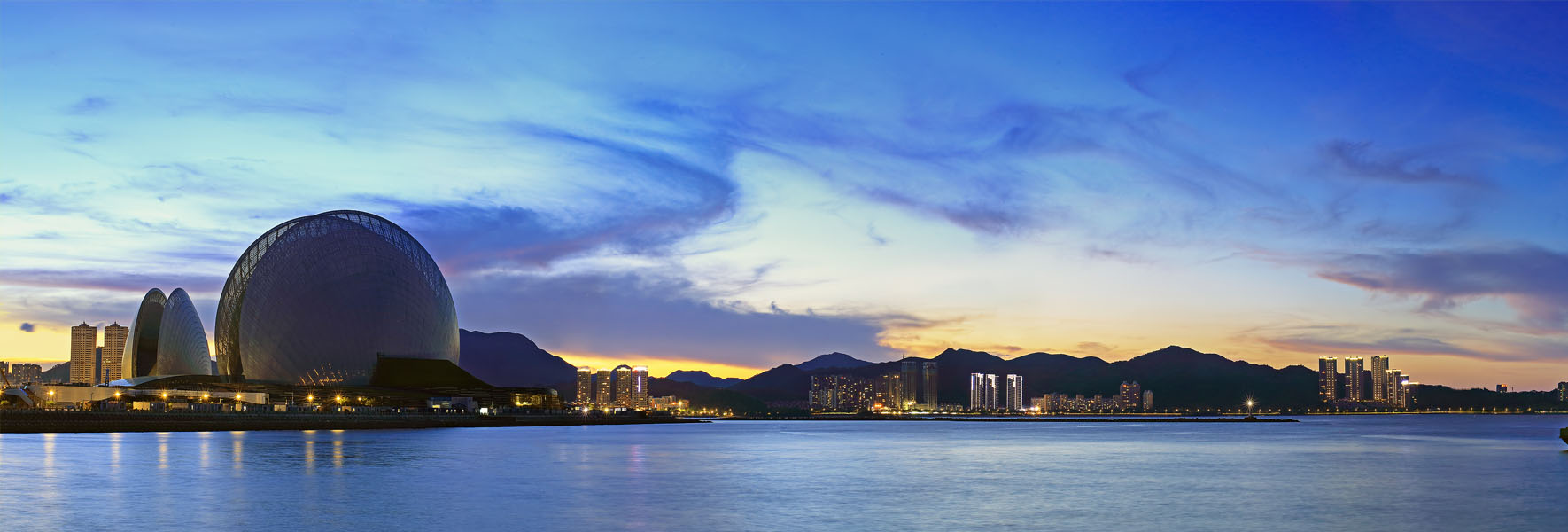Shenzhen architect who speak with his works -- an exclusive interview with Professor Chen Keshi
Loading...
![]() 2016-12-29
2016-12-29

In 2009, the architectural design scheme of Zhuhai Opera House, which he served as the chief architect, won the first prize in PK with the world's top design masters. It took eight years to finally complete, marking the rise of Chinese local architects in the field of international architectural design. In 2011, Lulang international tourism town, which he served as the chief designer, absorbed the spatial art elements of traditional Tibetan towns in the overall urban design, More than 250 single building designs have successfully expressed the integration of traditional architecture and modern life in Tibet.
As an architect living in Shenzhen, Chen Keshi demonstrated the strong strength of Shenzhen as the "city of design" with his excellent works. As one of the nine representatives of Shenzhen creative industry in 2016, Chen Keshi read out the Declaration on behalf of Shenzhen design industry at the opening ceremony of "creative December".
Zhuhai Opera House
For the first time, Chinese architects took the lead in the large-scale international bidding of the opera house
On the last day of 2016, Zhuhai Municipal Government specially invited Chen Keshi to attend the first concert of Zhuhai Opera House, which was soon completed. The first show attracted much attention for a time. The photo screen brushing network of the Grand Theater composed of two erected "shells" describes their feelings with "beauty death" and "shock".
Zhuhai Opera House covers an area of 57700 square meters, with a total construction area of about 63900 square meters. It is the only Grand Theater built on the sea in China. In 2008, Zhuhai municipal government held the global architectural design scheme bidding for the Grand Theater, which attracted the attention of masters in the field of architectural design from the beginning. More than 30 famous architects and institutions from Britain, the United States, Germany, France and Switzerland participated in the bidding, including Paul Andrew, the architect of the National Grand Theatre, Zaha Hadid, who designed the Guangzhou Opera House, and Herzog, who designed the "bird's nest" in Beijing. In the end, the "Moon Scallop" scheme created by Chen Keshi defeated all the others, won the first prize in the competition and was determined as the implementation scheme.
This is the first time that Chinese architects have won the first prize in the large-scale international architectural design scheme competition of the opera house.
"The design was inspired by Botticelli's famous painting the birth of Venus." Chen Keshi was still excited when he recalled the creative process of that year. When he went to see the venue with more than 30 masters on the day when the design scheme began, when he stood on the couple's road to see the location of the Grand Theater, he thought, "what kind of image rises from the sea and is most attractive?" He thought of "sunrise in the East China Sea", so the first sketch painted the sunrise sea surface. But the Grand Theater consists of two buildings, an opera hall and a concert hall, so the second sketch shows a sun and a moon. The idea quickly ran into trouble because the sun and moon could not rise from the sea at the same time. At that time, he happened to talk about the famous Italian Renaissance painting "the birth of Venus" when giving a lecture in the "advanced lecture on aesthetics and art history". According to ancient Greek legend, Venus was born in a shell, so he thought of the shape of the shell. "After thinking of shells, I immediately checked the data and found that the Pearl River estuary is rich in a kind of shell called 'Moon Scallop', which is very beautiful in gold and white. The design of 'Moon Scallop' was born in this way."
Bid evaluation experts believe that Chen Keshi's plan "perfectly expresses the romantic characteristics of Zhuhai, a coastal city, with a shape beyond imagination."

Lulang Town:
Make the most concentrated and perfect modern interpretation of Tibetan traditional architecture
Recently, many media have reported a small town in Tibet: Lulang international tourism town from different perspectives. This is a key Tibet assistance project of Guangdong Province. Because of the deep involvement of "Shenzhen design", it highlights its uniqueness, especially its original design value.
Lulang town covers an area of 1.7 square kilometers and has more than 250 single buildings, including three five-star hotels, art galleries, Tibetan opera performance centers, etc. Due to the successful experience of hosting and completing the design of Wenchuan Shuimo town aided by Guangdong, the Guangdong provincial government decided to hire Chen Keshi as the chief designer of Lulang international tourism town. Over the past five years, Chen Keshi has devoted a lot of efforts to complete this difficult mission. From urban design to the design of all individual buildings and landscape projects, and from the overall space of the town to the conceptual sketches of hundreds of buildings, he expressed his deep understanding of Tibet's natural geography and human geography.
Before taking over the Lulang project, Chen Keshi had designed nearly 30 ancient towns in China, including Dali ancient town in Yunnan, Luodai Ancient Town in Chengdu, Nantou ancient town in Shenzhen, gankeng Hakka small town, etc. After the Wenchuan earthquake in 2008, he served as the chief designer of the reconstruction of Shuimo town in Wenchuan. After the completion, Shuimo town has become a 5A scenic spot and won a national award. Lulang is a larger platform, which provides space for Chen Keshi's design talent, but it also brings great challenges. During the design process, he and his team visited the whole Tibetan area, investigated the Potala Palace and the old urban area of Lhasa more than ten times, and took nearly 100000 information photos. In more than five years, he went in and out of Tibet more than 30 times for this project, took 117 flights, adjusted and modified the design scheme 17 times, and changed 478 design documents on site. "Behind all the great projects in the world, we have to pay more than ordinary hard work." Chen Keshi said.

Shenzhen Bay super headquarters:
Infiltrate the ideal of Chinese traditional residential space in the design
During the interview, Chen Keshi took out a design scheme of Shenzhen Bay super headquarters. The complex composed of multiple high-rise buildings on the cover was named "Chinese dream". In the eyes of reporters, it is a fascinating "magic castle", which will make you intoxicated.
The super headquarters, located in Shenzhen Bay, Nanshan District, Shenzhen, has a total construction area of 2.7 million square meters and a construction height of 680 meters. This super headquarters includes Museum, performance center, International Conference Center, water opera house, aquarium, Shenzhen headquarters of the world's top 500, Shenzhen Bay University and Urban Central Park on the 2km central axis. After completion, it will be the world's largest super headquarters and cultural complex.
In 2014, when Shenzhen announced the international bidding for super headquarters design, it attracted more than 300 architectural design institutions around the world to sign up, and finally 124 submitted their plans. After strict selection procedures, Chen Keshi and his team won the first place in the expert selection according to the artistic conception of mountains and water in the traditional Chinese living ideal, which once again reflects the power of original design.
Chen Keshi is both a scholar and an architect. He has trained 79 postdoctoral, doctoral and master's students in Shenzhen Graduate School of Peking University, published more than 80 papers and many monographs. He put forward the theories of "urban humanism" and "green new garden city", trying to promote contemporary Chinese design to grow towering trees from the soil of Chinese culture based on humanistic values, At the same time, it also tries to combine the British pastoral city theory with Chinese traditional pastoral thought, inject modern green ecological technology, and build an urban design concept in line with Chinese humanistic and natural ideals.
"China's development has provided architects with a once-in-a-lifetime historical opportunity. What we need to do is to strive to contribute more architectural works that can become world classics." Chen Keshi is full of confidence in the future.
Recommended news
Chen Keshi | The urban design scheme of Motuo County, Xizang passed the expert review meeting
Recently, the urban design scheme of Motuo County, Xizang, completed by the Zhongying Urban Design Team led by Professor Chen Keshi, passed the expert review and was highly recognized by the experts present.
2025-10-14
Chen Keshi | The urban design scheme of "Paizhen Huacheng" in Linzhi, Xizang, passed the expert review and was highly recognized by the leaders of the autonomous region
Recently, Wang Junzheng, Secretary of the Communist Party of China Tibet Autonomous Region Committee, listened to a report by Professor Chen Keshi from Zhongying Urban Design Team on the urban design plan for "Paizhen Flower City" in Nyingchi. He emphasized the need to base the project on the positioning of a "characteristic town," seize the historical opportunity, refine ethnic elements, and develop a unique architectural style that "externally showcases ethnic features while internally embedding modern functionality."
2025-09-08
上一篇:Tuocheng - Guangdong's millennium old city will return to glory
下一篇:"The birth of Venus" -- the Grand Theater lights up the coastline of Zhuhai
Return to list